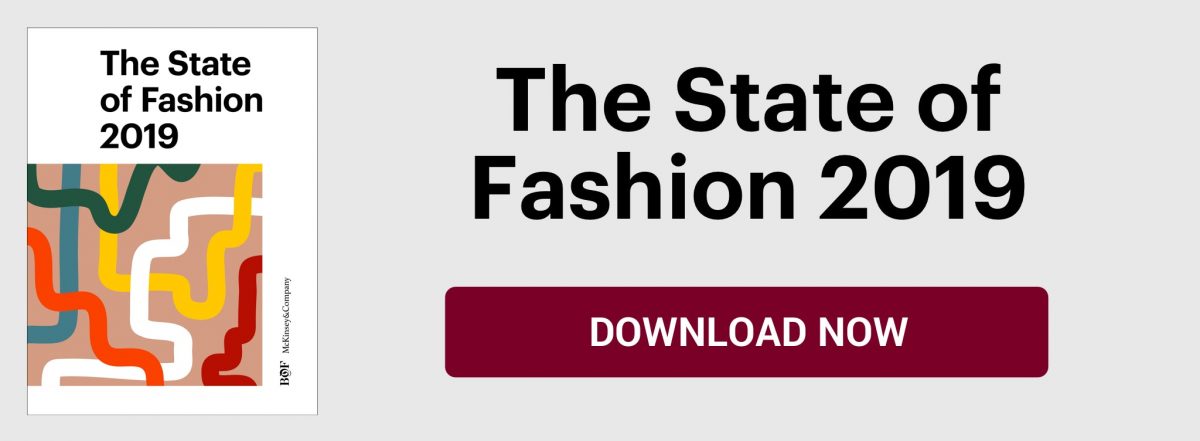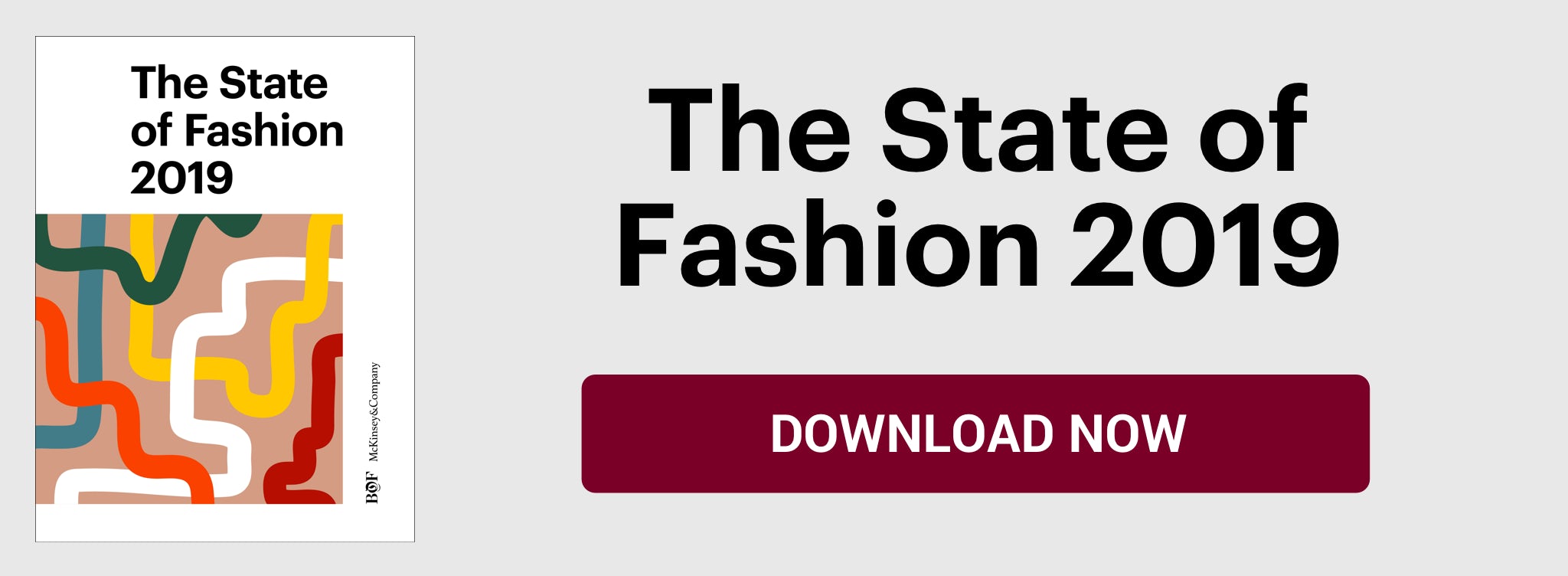This article appeared first in The State of Fashion 2019, an in-depth report on the global fashion industry, co-published by BoF and McKinsey & Company. To learn more and download a copy of the report, click here.
BoF: What are the biggest priorities and opportunities for the fashion industry in 2019?
Cédric Charbit: There are two things that I think are going to be game-changers. In the future, we will all make commitment part of the aesthetic. It’s what you call activism or being meaningful in what you do in terms of fashion. A product can no longer be only and purely craftsmanship plus creativity and heritage: we need to add values and emotion to it. Products need to be meaningful.
The second thing that I feel is going to be very important is how we engage with our audience. It’s of course about the customers and also the non-customers; the people who just want to engage with you on the digital side, for example, on social media and the other stakeholders of the industry. The brand is not only here to sell product to the client. It’s also about communicating and conveying messages and values to the entire community of the brand. I think we have to be community-centric, audience-centric. As a brand we rely on many, many other stakeholders. We should really focus on our audience as opposed to just our clients.
BoF: When you’re thinking about making a commitment, how do you think about which causes to get behind?
CC: Balenciaga has gained a lot of visibility lately. We have enjoyed much broader exposure than in the past. What should we do about this exposure and how do we raise awareness using the Balenciaga brand as a platform, not only to convey our creativity and product, grow our business and improve our market share, but also to use the platform to raise awareness? This was very much our mindset in the first place.
It is how we work together with [Balenciaga’s artistic director] Demna [Gvasalia]. It’s having him at the helm of the creative, artistic direction of the brand but also being part of what we want to do with the brand, its values and its future. Fashion cannot lock itself in the so-called ivory tower anymore. We need to be conscious of the world and reflect what’s happening. Demna embodies this new generation of designers who want to express this. I think this is quite important. It started in a very genuine way.
Fashion cannot lock itself in the so-called ivory tower anymore.
BoF: Why did you make the decision to support the World Food Programme?
CC: It was linked to the creative process of Demna. It’s not [just] selecting a cause; it’s also making sure it makes sense and it ties back to what he has in mind as a creative vision. The show was about accumulation, it was layering of pieces. It was a sense of opulence and I think he wanted to [contrast] that [with] the World Food Programme, it’s to feed that tension between accumulation and giving back.
BoF: What was the reaction from your community?
CC: It was not like we were waiting for feedback; we felt convinced that we should do this and we were extremely determined to do this. There was an authenticity about it. Second, the show exposure and visibility about the World Food Programme is not something that was hidden. It was clear and loud; it was on the runway and it says, Balenciaga supports the World Food Programme. It’s a good example of having commitment blended and integrated with the aesthetic as opposed to have commitment being something that we do aside or something we do in the shadows.
I hear store managers and sales assistants telling me that some customers have [told] them that it’s the first time in their life they’ve made a donation. If we can influence how people dress but also in a way, try also to [make them] think, I think it’s great. This initiative has brought us a lot of comments, likes and transactions. At the end of the day, this is how you engage with the community, to engage with the brand, not only via transactions.
BoF: Why do you think brands are taking a more vocal stance now than they might’ve done before? What are the dynamics at play that makes this an appropriate thing for a luxury fashion brand like Balenciaga to do?
CC: The fact the brand belongs to [a group like] Kering, expressing commitment towards sustainability and some values as a group I think makes a difference. Nobody’s forced [to do anything] but there’s an environment and there’s a context [that is supportive]. Second, [with] social media and the fact that there’s now a direct contact to customers and the Balenciaga community, it’s time to not only push product but also to push the values and to explain the creative process in a better way. I would call it storytelling, in a way. What has changed is the fact that there are now leaders in the luxury industry such as Kering that are taking a commitment towards values.
I also feel it’s about the direct relationship we have with our community, where we can express ourselves. We’re extremely exposed and visible and we could make a difference. It’s part of our responsibility. I feel this has always been part of fashion, to push the norm, to change things.
When you think of wearing a logo of a brand, is that an expression of a status symbol? I personally don’t think so. I think what matters for our audience is to make sure that when you wear a Balenciaga logo it means you belong to the community, you embrace the aesthetic and you share the values. The creativity of the brand becomes very relevant and important for customers. To put your name on a T-shirt is simply not enough. You need to make sure that you engage with people in the right way so they share and they belong.
This has always been part of fashion, to push the norm, to change things.
BoF: Balenciaga, since the arrival of Demna, has been a disruptive force in the industry. How do you keep the core of the brand and what makes it this historical, beautiful heritage brand while disrupting it enough to make it exciting, fresh and new?
CC: The brand is 101 years old and Cristóbal Balenciaga himself was a leader, not a follower. I think we have inherited his spirit. It makes total sense for Balenciaga to be today a brand that is not a follower; a brand that is a leader, pushing the norm, a brand that is doing a very unique casting, a brand that is pushing the norms of fashion, of volumes, of proportions on everything we do. A brand that is trying to rethink how we do retail and our stores, a brand that is rethinking how we act on social media, our tone of voice, who we hire, our community, what we do.
We are called disruptive. Demna is sometimes called disruptive. I feel this is very Balenciaga. It’s very much us and when you talk to people internally they all feel we are just simply acting normal and we just do the right things.
Sometimes I’m asked, ‘How do you do to get the millennials shopping at Balenciaga?’ We simply never ever talk about how to appeal or sell to millennials. We simply never have a discussion on how to break the rules, how to make some noise, how to be disruptive. The brand itself has inherited the spirit of a leader, someone who was pushing the norm. The models Cristóbal Balenciaga were using were called monsters; people didn’t like how they looked. He used some very inexpensive product like fishermen garments and elevated them to a couture level. The guy was a disrupter at the time.
Now that we see the pictures in black and white and we see all this beauty and the power of his creations, 100 years after we feel this is elegance and beauty. At the time it was extreme. It was difficult, it was controversial and not everybody was into it. The reviews were just really tough on him. What I’m trying to say here is Balenciaga the brand has a spirit of being a leader. Instead of disruption I would call it leadership and innovation. Leadership: not because we are at the forefront, but leadership because we do things in a very unique and very Balenciaga way. Innovation: because we look at the brand, the creative side of it, how we engage with people and how we manage the brand in an inventive way as well.
BoF: Your best-selling sneakers have been a big part of Balenciaga’s success story. Can you help us understand the luxury sneaker phenomenon better, since you guys were really some of the pioneers who brought this into the mainstream?
CC: Sneakers started at Balenciaga for two reasons. The first one is because it was a creative vision, something Demna wanted to do because he was true to what he felt was right for the brand and with his aesthetic.
Second, the way we have worked sneakers at Balenciaga from a design, a product development standpoint and from a communication standpoint was the same as if it was an amazing couture dress or a perfectly-cut tailored jacket. If we look at the Triple S for example, it’s the combination of three different soles that are not stuck together. They’re just assembled together. The amount of work to create that shoe for me is at couture level, meaning the shoe is clearly pushing the norms. Balenciaga was pushing the norms whilst creating mega volumes, whilst proposing things that were unique and new and forward. I think there’s a lot of DNA in that shoe.
So, why are sneakers replacing handbags? The products we sell today need to be meaningful, let’s say I call them smart, like a smartphone for example. The shoe, it’s the equivalent of a smartphone. The sneaker itself is extremely meaningful for people. You can work, it’s very versatile, it goes from day to night, it goes for the weekend, it goes for work. It’s about the casualisation of the place to work and how people dress to go to work. Sneakers have become their own category. It’s not a trend; it’s a relevant category for brands. I don’t want to make a statement. Are shoes the new bags? Maybe. There’s a lot of space for bags, but what I can say is that that shoes are also a great alternative to stilettos and sneakers have found a great market share simply because they blend nicely with the way we live.
This interview has been edited and condensed.


